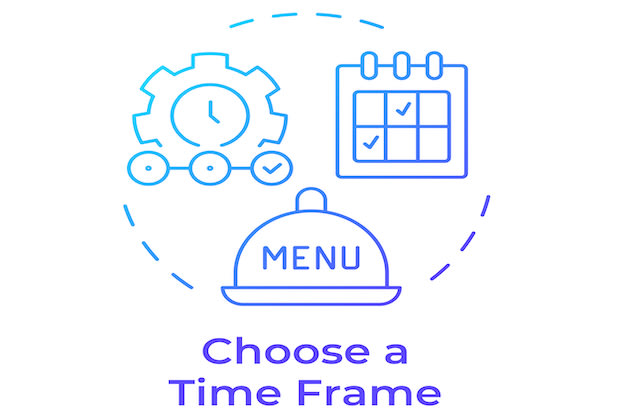Is a 3-Month Weight Loss Program Enough to See Significant Results?
Is a 3-Month Weight Loss Program Enough to See Significant Results?
Table of Contents
I. What Can Be Achieved in 3 Months?
II. Building an Effective 3-Month Plan
III. Staying Motivated and Adjusting as You Go
IV. What Happens After 3 Months?
When starting a weight loss journey, three months might sound short, but a lot can happen in that time with the right plan in place. Whether you're considering a structured program or building your routine, knowing what’s realistic is the first step to setting yourself up for success.
A 3-month weight loss program can be a great way to build momentum. It offers enough time to see changes in your energy, habits, and physical health, especially when paired with smart eating and consistent activity.
Still, the journey doesn’t end at 90 days. Lasting results come from what you do after those three months are over.
This article breaks down what kind of progress you can expect, how to stay motivated, and why the right structure matters. If you're thinking about committing to a short-term plan, here’s what you need to know before you begin.
Quick Takeaways
- Three months can lead to measurable progress when goals are clear
- Most programs see better results with lifestyle changes, not just diet
- Tracking and support improve long-term outcomes
- Realistic goals help maintain motivation throughout the program
- Weight loss results vary by individual and starting point
- Continuing healthy habits after the program is key to lasting change
What Can Be Achieved in 3 Months?
Typical Results Over 12 Weeks
Research suggests that in a 3-month weight loss program, individuals typically lose between 5% and 10% of their starting weight. This result depends on how closely the plan is followed and the health status at the start.
A steady routine with good habits makes better results more likely. Still, weight is only part of the story. Better sleep, fewer cravings, and more energy also show progress. These signs may not be visible on a scale, but they can significantly improve your daily life. A short-term plan is most effective when it focuses on more than just numbers.
Why Time Frames Matter
Setting a goal with a 3-month limit can help many people stay committed. Having a finish line in sight gives the process structure and direction. It can also make it easier to notice changes and celebrate small wins along the way.
Still, not all progress happens fast. If results come slowly, it’s easy to get discouraged. That’s why it helps to track more than just weight. Energy, sleep, and mindset all show improvement as well. A short-term program works best when you stay flexible and keep your eyes on the overall progress.

Measuring Success Beyond the Scale
Progress is not always about losing weight. Some people experience significant changes in their eating habits, sleep patterns, or stress management. These shifts are just as important and can keep you moving in the right direction.
- Better focus and clearer thinking
- Improved sleep or energy during the day
- More structure and routine in daily habits
Writing down your progress helps more than you might expect. A notebook or app can show changes you might not notice otherwise. When results slow down, these records remind you how far you’ve come and why it’s worth sticking with your plan.
Building an Effective 3-Month Plan
Key Components of a Strong Program
Strong weight loss programs focus on more than just food. They include daily movement and helpful routines. Instead of dropping calories too low, they use balanced meals and steady habits to support change.
The best programs also include support. That could be a coach or a tracking tool. These extras help people stay motivated. They also make it easier to get back on track after a tough day.
Fitness doesn't need to be intense. What matters is doing something often and building a pattern that works for your schedule and your body.
Tailoring the Plan to Your Life
A good plan should match your lifestyle. It works best when it feels natural and fits your day-to-day habits. You are more likely to stick with it when it makes sense for you.
- Pick meals that are easy to prepare
- Choose exercises you enjoy
- Set goals that fit your current routine
- Keep healthy snacks available
- Give yourself room to improve slowly
Even the best plan will need changes sometimes. Life can be busy or unpredictable. Learning how to adjust without giving up is part of building habits that last.

Staying Motivated and Adjusting as You Go
Why Support Makes a Difference
Getting support while working on your goals can make a big difference. Encouragement keeps you motivated and helps you stay on track. Whether your support comes from a coach, a friend, or an online group, it can help you talk through tough days and celebrate the good ones. These connections remind you that you're not alone in this.
Regular check-ins can also keep you on the right path. These moments provide an opportunity to reflect and adjust your routine. Consider changing your meals, trying a new activity, or taking a break when needed. Support during these times can help you move forward without feeling stuck or unsure.
Recognizing and Managing Plateaus
During a 3-month program, weight loss may slow down. This is common and does not mean you have failed. As your body adjusts, the results may take longer to appear. It's helpful to notice other signs of progress, such as improved focus or better sleep.
To move past a plateau, make small changes. A new meal plan or a different workout can help. Don’t change everything at once. Stick with a plan that feels right and allows for growth. With patience and support, progress can continue without stress or burnout.
What Happens After 3 Months?
Planning for the Next Phase
Reaching the end of a three-month program is a significant milestone. However, what happens after that can significantly impact your long-term success. Without a clear plan, it’s easy to fall back into old routines. That’s why it's helpful to prepare for the next stage before the program concludes.
- Keep setting weekly goals that fit your lifestyle
- Plan simple meals that match your energy needs
- Check in with your progress and adjust when needed
The goal is to build on what you’ve started. You don’t need a perfect plan. You just need one that helps you keep moving forward. Progress takes time, and steady effort often leads to better results than quick fixes.
Maintaining Progress Without Pressure
After finishing a short-term goal, some people are unsure what to do next. It is important to keep moving forward without rushing. Try to maintain the habits that helped you succeed and eliminate the ones that felt forced or difficult to maintain. Keep things simple and focused.
As life changes, your plan should change too. New goals or added stress might affect your routine. That is normal. What matters is staying flexible and honest about what works. A good plan adjusts with you. This makes it easier to stick with your goals over time.
See Results With ScriptsMD
A 3-month weight loss program can lead to meaningful change—but only if it’s approached with realistic goals and a plan that fits your life. With the right mindset and flexibility, it’s possible to build healthier habits that last well beyond the first 90 days. Remember that weight loss isn’t just about the number on the scale. It’s about how you feel, how your body functions, and how your routines improve. Think of your program as the beginning, not the end.
For more support navigating your insurance benefits for weight loss treatments, contact ScriptsMD today.
